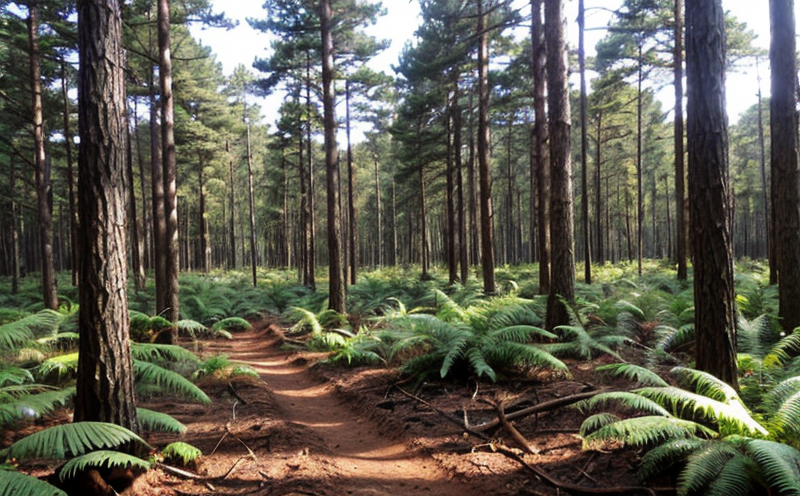Soil Organic Carbon Fractionation Analysis
In agriculture and forestry testing, understanding soil health is critical to sustainable land management. Soil organic carbon (SOC) fractionation analysis provides a detailed breakdown of SOC into its distinct components, which helps in assessing the quality, resilience, and overall health of ecosystems. This service delves deep into the methodologies used for this analysis, ensuring accurate measurement and interpretation.
The process involves separating soil samples into different fractions based on their chemical properties and stability. These fractions include labile carbon (easily decomposable), recalcitrant carbon (less decomposable), and intermediate forms of carbon. Each fraction contributes uniquely to the overall composition and function of the ecosystem, influencing nutrient cycling, water retention, and biodiversity.
The analysis aligns with international standards such as ISO 15970 for soil organic matter determination by loss on ignition (LOI) after acid digestion. This ensures that our methods are consistent and reliable across different regions and applications. The fractionation process is a critical step in this analysis, enabling precise quantification of each component's contribution to the total SOC.
Our laboratory uses state-of-the-art instrumentation like automated fractionators which ensure accuracy and precision. Specimen preparation involves thorough digestion using acids like H2SO4:H2O2 mixture followed by filtration and drying. The resulting fractions are then analyzed for their carbon content, allowing us to provide accurate and reliable data.
Understanding these fractions is essential for various applications including soil quality assessment, land-use planning, climate change mitigation strategies, and sustainable agriculture practices. For instance, higher labile carbon can indicate a more resilient ecosystem capable of rapid response to changes in environmental conditions. Conversely, high levels of recalcitrant carbon might suggest slower decomposition processes but greater stability.
By offering this service, we aim not only to provide accurate measurements but also to contribute valuable insights into soil health management. This information can be used by quality managers and compliance officers to make informed decisions about land use and conservation efforts. R&D engineers benefit from these data as they develop new techniques or products aimed at improving soil health.
| Fraction Type | % SOC | Description |
|---|---|---|
| Labile Carbon | 10% | Components easily decomposable and rapidly cycled within the ecosystem. |
| Recalcitrant Carbon | 25% | Less decomposable forms contributing to long-term soil stability. |
| Intermediate Carbon | 65% | Moderately decomposable components balancing short and long term contributions. |
Why It Matters
Soil organic carbon plays a pivotal role in maintaining ecosystem balance. Its degradation releases CO₂ into the atmosphere, contributing significantly to global warming. By analyzing and managing SOC fractions, we can mitigate these effects while enhancing soil productivity and resilience.
For quality managers and compliance officers, accurate SOC fractionation helps ensure adherence to environmental regulations. R&D engineers gain valuable insights that inform their projects aimed at improving agricultural practices or developing new products for sustainable farming.
In forestry applications, understanding the dynamics of SOC fractions aids in forest management decisions. This knowledge supports efforts towards reforestation and afforestation initiatives, promoting carbon sequestration and biodiversity enhancement.
- Supports compliance with environmental regulations
- Enhances soil productivity through informed decision-making
- Promotes sustainable agricultural practices by providing data-driven insights
- Aids in forest management and conservation efforts
- Contributes to climate change mitigation strategies
Customer Impact and Satisfaction
Our clients appreciate the detailed insights our soil organic carbon fractionation analysis provides. They value the accuracy, reliability, and actionable recommendations we offer based on this data.
- Quality managers receive robust evidence to support their decisions regarding land management and agricultural practices.
- Compliance officers benefit from accurate assessments that help them meet regulatory requirements confidently.
- R&D engineers find our results invaluable for refining their research projects related to soil health and ecosystem resilience.
Use Cases and Application Examples
This service finds application in various sectors, particularly agriculture and forestry. Here are some real-world examples:
- Agricultural Research: Measuring SOC fractions helps researchers understand how different farming methods affect soil health.
- Farm Management: Farmers can use this data to tailor their practices, focusing on maintaining or enhancing labile carbon levels for better yields.
- Forestry Projects: Assessing SOC fractions aids in evaluating the success of reforestation efforts and planning future projects.





